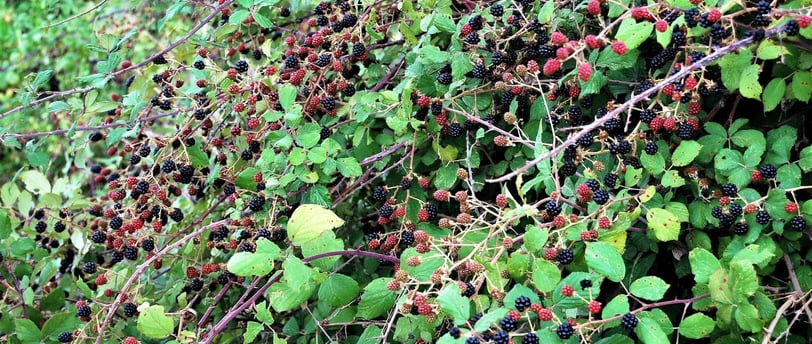The Origins of the Invasive Blackberry Bush
With the prevalence of blackberry bushes throughout the state, one may wonder were they came from. This invasive species has some interesting roots in selective breeding. Read to find out more.
9/24/20242 min read


The Origins of Invasive Blackberry Bushes in Washington
Washington State's landscapes are often characterized by their lush greenery, but among the native flora, the invasive blackberry bushes, particularly the Himalayan blackberry, have become a ubiquitous presence. Here's a deep dive into how these plants became a part of Washington's ecosystem.
Introduction by Luther Burbank The story begins in the late 19th century with Luther Burbank, a renowned American botanist and horticulturist. Known for his plant breeding experiments, Burbank introduced the Himalayan blackberry (Rubus armeniacus, often misnamed as Rubus procerus or Rubus discolor) to the United States in 1885. His intention was to cultivate a hardy, productive berry plant that could thrive in various conditions, appealing to the growing American middle class's desire for fresh fruits.
Spread and Invasiveness The Himalayan blackberry was particularly well-suited to the Pacific Northwest's climate. The plant thrived due to its ability to spread vegetatively; its canes can root upon touching the ground, creating new plants and forming dense thickets. Birds and other wildlife also played a significant role in spreading the seeds, contributing to its invasiveness.
Ecological Impact Over time, what was introduced for its fruit became recognized as an ecological challenge. By the early 20th century, the plant had escaped cultivation. The Washington State Noxious Weed Control Board now classifies it as a Class C noxious weed, indicating its widespread presence and the state's efforts to control it.
Impact on Native Flora: The aggressive growth of Himalayan blackberries often outcompetes native vegetation, reducing biodiversity.
Cost of Management: According to the Washington Invasive Species Council, managing these infestations costs over $8 million annually, reflecting the economic impact of this botanical introduction.
Cultural and Historical Perspectives While Burbank's introduction of the blackberry has led to ecological headaches, it's also woven into the local culture. Foragers and gardeners in Washington often harvest these berries, and they've become a bittersweet symbol of the region's natural abundance and the unintended consequences of botanical experimentation.
The tale of Washington's invasive blackberry bushes is a classic example of good intentions in horticulture leading to unforeseen ecological repercussions. What Luther Burbank might have seen as an achievement in plant breeding has turned into a lesson on the importance of considering the long-term environmental impact of introducing non-native species. This story, pieced together from historical records, local reports, and the enduring presence of the blackberries themselves, reflects a broader narrative about human interaction with nature, where even the seemingly benign act of planting a berry bush can reshape an ecosystem.
Services
Affordable blackberry bush removal and vegetation clearing.
Community
Support
© 2024. All rights reserved.
